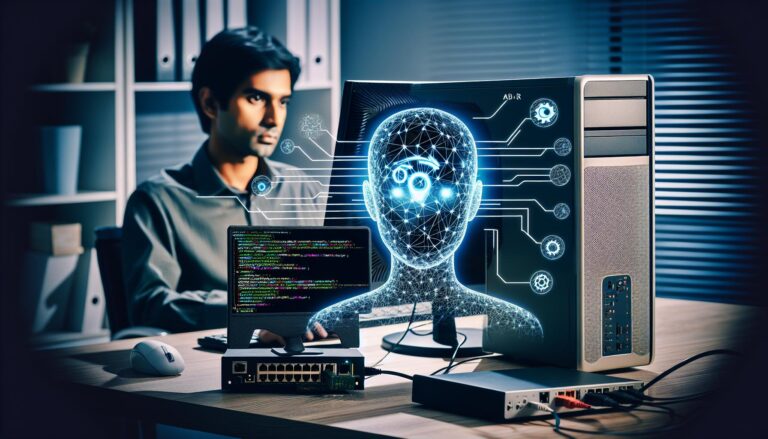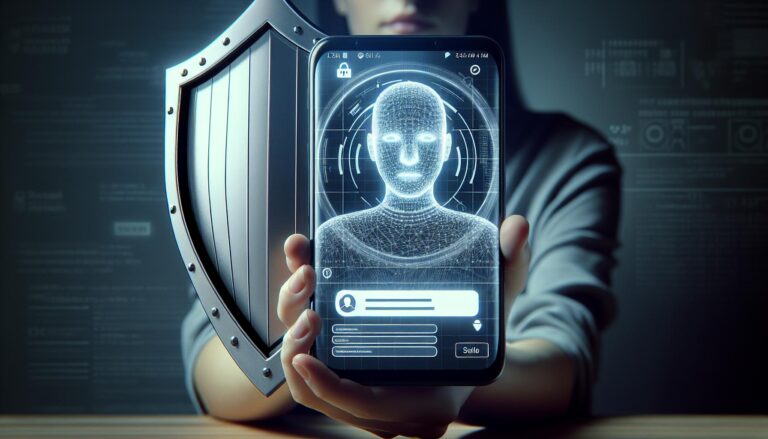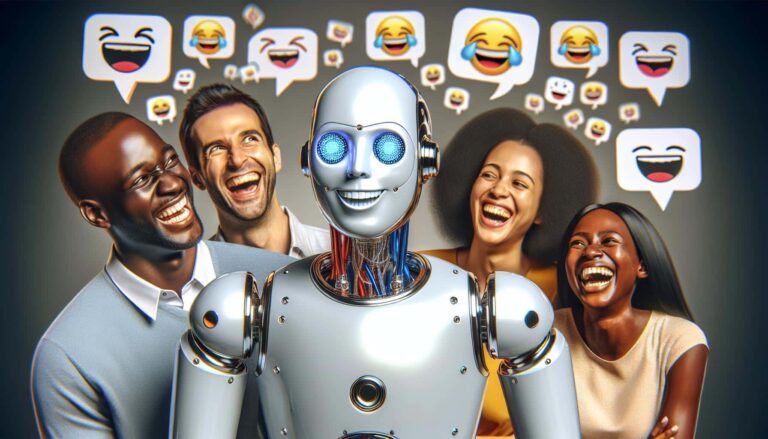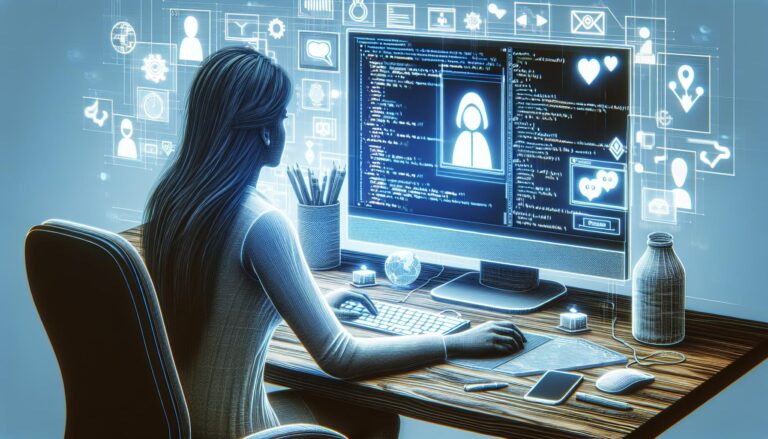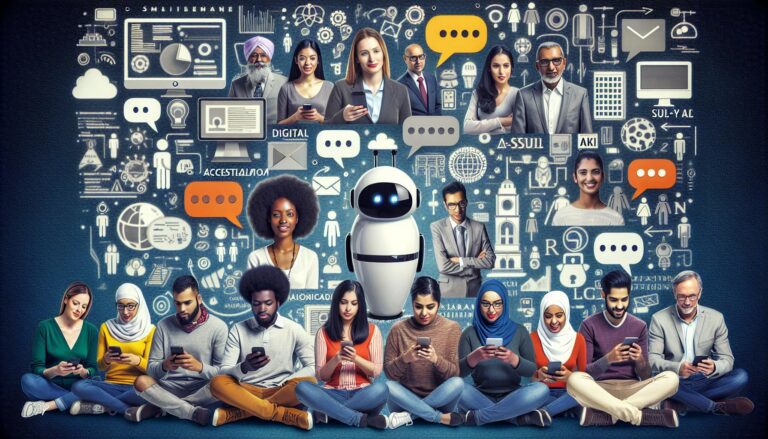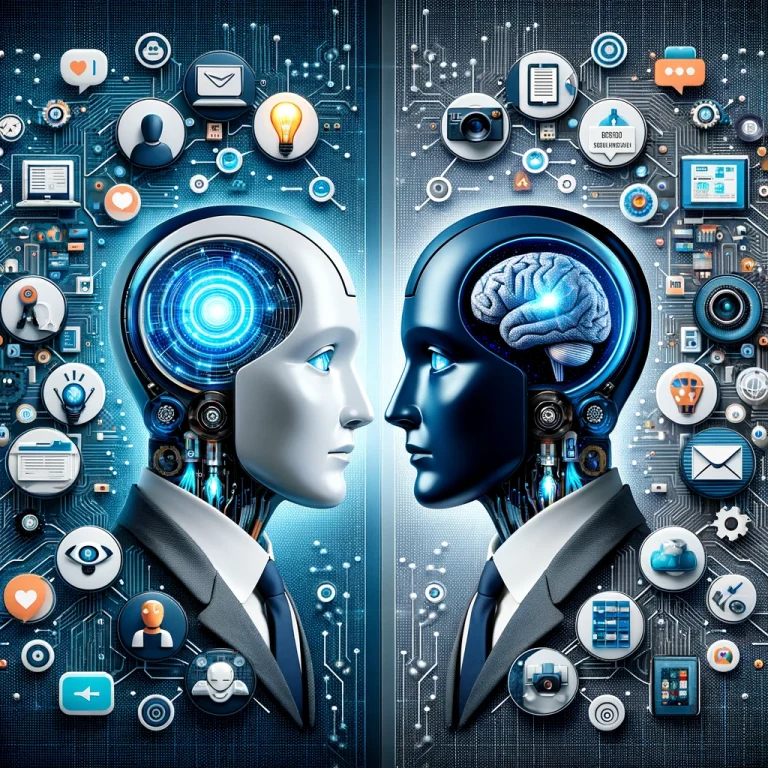Can Turnitin Detect AI-Generated Text? Chat GPT and Plagiarism Detection
Have you ever wondered if Turnitin can detect Chat GPT? You’re not alone. It’s a question that’s been buzzing around academic circles, and I’m here to shed some light on it.
Turnitin, known for its plagiarism detection capabilities, is a go-to tool for educators worldwide. But can it really pick up on content generated by Chat GPT? Let’s delve into it.
Chat GPT, an advanced language model developed by OpenAI, is gaining traction for its ability to generate human-like text. But how does this sophisticated tool fare when it comes to Turnitin’s watchful eye? Stick around as we explore this intriguing topic.
PowerBrain AI Chat App powered by ChatGPT & GPT-4
Download iOS: AI Chat
Download Android: AI Chat
Read more on our post about ChatGPT Apps & Chat AI
Key Takeaways
- Turnitin is a globally recognized tool known for its advanced plagiarism detection capabilities. It compares submitted documents against a large database of academic papers, web content, and books and assigns a similarity index to the submitted text.
- Chat GPT, developed by OpenAI, is a sophisticated language model capable of generating human-like text based on prompts and inputs. Importantly, it doesn’t mimic or copy its training sources, essentially creating original content.
- While Turnitin uses a highly efficient algorithm for detecting plagiarized content, it cannot discern semantic meaning in text. Consequently, it might struggle to identify text that has been significantly paraphrased or generated through AI.
- As an AI, Chat GPT creates unique text pieces that don’t necessarily exist in any previously known database. This poses a challenge for Turnitin, which relies on matching text to existing sources.
- The rise of AI-generated words presents an ongoing challenge and a paradigm shift in the field of plagiarism detection. This requires a proactive response from educators, institutions, and software developers to manage and adapt to these new developments.
- In the face of this rapidly evolving landscape, it’s crucial for the education sector to shift focus towards fostering a culture of academic integrity and respect for intellectual property while also considering how to adapt teaching methods for an AI-integrated future.
Understanding Turnitin and its Plagiarism Detection
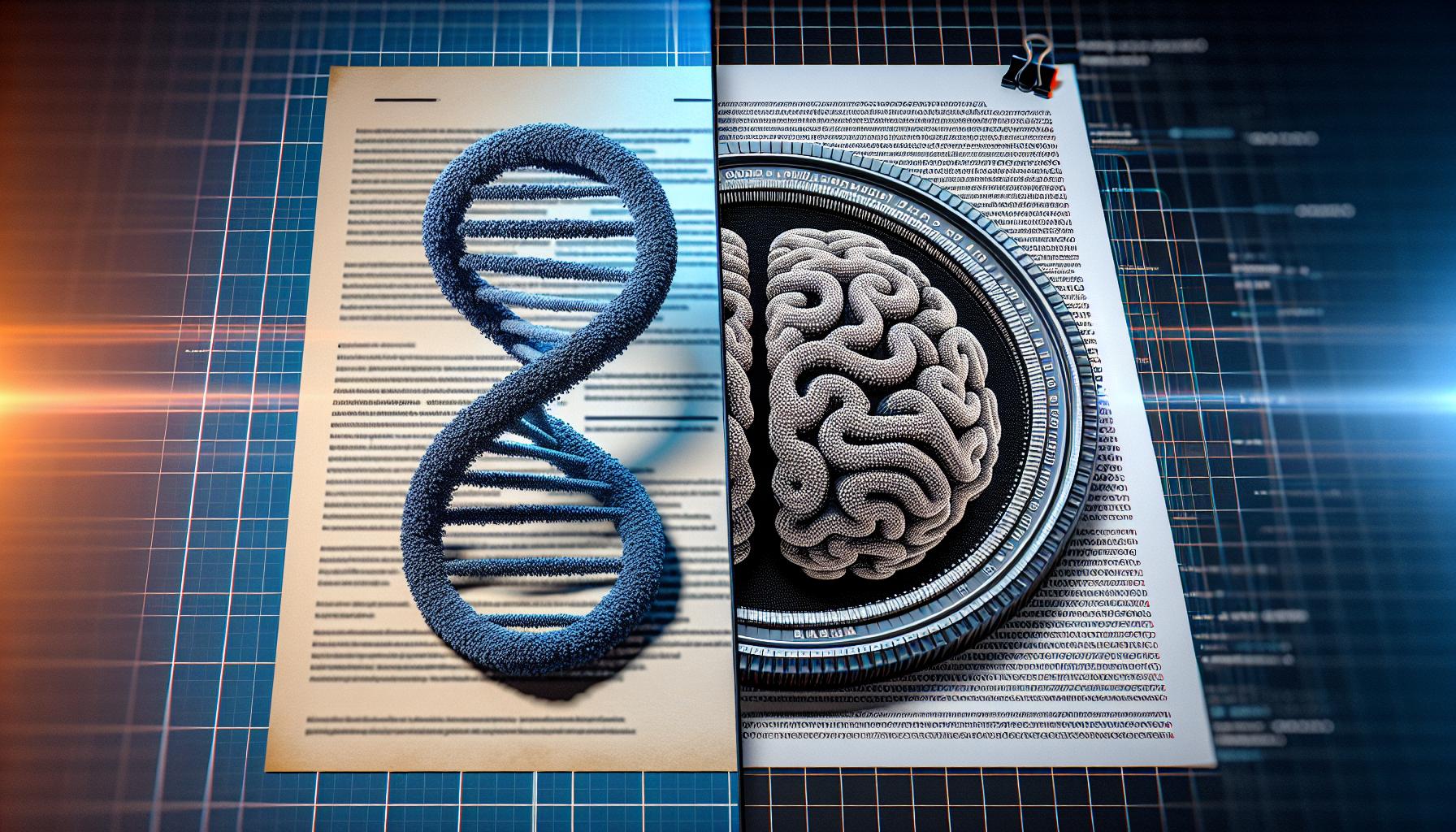
Turnitin is a widely acknowledged tool in the academic world. It’s gained recognition for its prowess in detecting plagiarism. Essentially, Turnitin operates by comparing submitted documents against a vast database. The database comprises academic papers, web content, books, and a plethora of other resources. Turnitin analyzes this multitude of documents and assigns a similarity index to the submitted text. It’s important to note that a high similarity index isn’t just a sign of plagiarism; it could also imply improper citation or paraphrasing.
Delving deeper, Turnitin doesn’t just look for exact match phrases. It uses advanced algorithms to detect paraphrased content as well. Turnitin’s sophisticated software can identify hidden, modified, and even translated text. Remember, the goal here is to uphold academic integrity and promote original thought.
Chat GPT, on the other hand, is an advanced language model by OpenAI. It creates human-like text based on the prompts and inputs it receives. This doesn’t necessarily imply plagiarism; it’s generating original content, essentially an output based on the input. Think about a conversation with a person: your words might spark an idea for a response. That’s how Chat GPT operates.
Read more
ChatGPT Writer
Detect ChatGPT
Chat GPT no restrictions
Connect Chat GPT to internet
Chat GPT no login
xChatGPT
What does this mean in terms of Turnitin detecting Chat GPT-generated content? It’s a complex question that we’re dissecting in this article. To summarize what we’ve discussed, understanding both Turnitin’s functionality and Chat GPT’s working tool is the first step. We have only scraped the surface with these two distinct technologies.
We’ll discuss how the content generated by Chat GPT’s language model might interact with Turnitin’s plagiarism detection software, all while factoring in the subtle nuances of each. The key question: Can Turnitin effectively identify text generated by Chat GPT? Stay tuned as we delve deeper into this intriguing query.
Introduction to Chat GPT: An Advanced Language Model
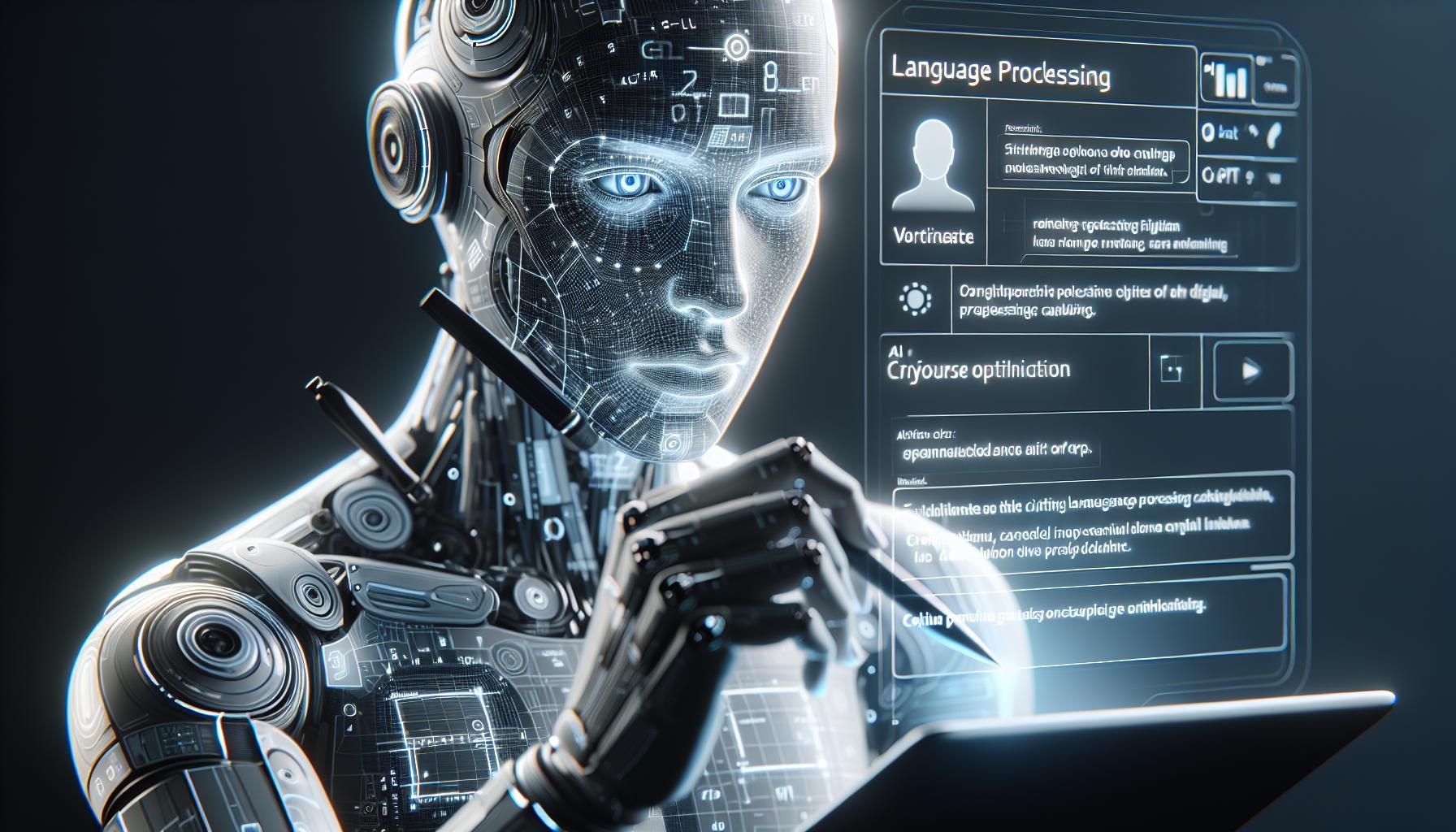
Having discussed the sophisticated features of Turnitin, I find it necessary to introduce our next pivotal player: Chat GPT. OpenAI, a renowned entity in artificial intelligence research, is the brain behind this ground-breaking technology.
Chat GPT, classified as a Generative Pretraining Transformed model, marks a paradigm shift in AI-based language processing. Using machine learning, it’s capable of devising responses that convincingly simulate human writing. This embodiment of technological advancement is achieved by training the model through a myriad of data from books, articles, and websites.
The underlying mechanism of Chat GPT is a blend of interesting and complex processes. It begins with the model getting primed with a sequence of words. Once primed, it predicts subsequent words based on the context set by the initial sequence. Remarkably, this process isn’t a replica of a mimicry game. Instead, it’s more of a predictive text generator, similar to your Smart Keyboard.
The predictive capability of Chat GPT is dynamic and flexible. Throw at it even the vaguest of prompts, and you’ll receive a coherent and seemingly personally-crafted text piece. You might question if the AI is reading your mind! But fun aside, it’s important to clarify that Chat GPT doesn’t possess cognizance capabilities. Instead, its swift and accurate responses are a testament to the fact that a huge database of diverse text corpora powers it.
Here, I’d like to highlight that Chat GPT does not plagiarize content despite creating human-like text. It generates unique text without copying from its training sources, thus challenging the realm of plagiarism detection as we know it. But is Turnitin equipped to identify such nuances as it evaluates the similarity index of a text piece? Let’s explore this in the following sections.
How Turnitin Detects Plagiarism

When discussing how Turnitin detects plagiarism, it’s vital to understand its unique algorithm. For starters, Turnitin doesn’t simply compare the submitted work against other sources but utilizes what’s known as a Similarity Report. This tool is potent and precise, expertly scanning billions of pages across the internet and its vast academic database and repositories of student work.
This method allows Turnitin to calculate a similarity index, which essentially is a percentage indicating how much of the submitted content is similar to other sources. Don’t misinterpret it; a high similarity index doesn’t automatically denote plagiarism. It can often be because of quotations, bibliography sections, or widely used phrases.
It’s important to note for my readers here that Turnitin’s algorithm is quite advanced. It distinguishes between correctly quoted text and inappropriate matching sections, thus reducing false-positive instances. Additionally, it’s designed to bypass attempts at cheating the system, such as swapping letters with similar shapes from different alphabets, replacing spaces with characters, or changing text into images.
Yet, Turnitin can’t discern the semantic meaning in the text. Hence, if a student were to paraphrase a source, changing its wording without altering its contextual sense, Turnitin would fail to consider this as plagiarism. Consequently, it’s not infallible, and the final judgment always relies on the evaluator reviewing the similarity report.
Now that we’ve understood how Turnitin operates, one might wonder if this sophisticated tool can detect text produced by a cutting-edge language model like Chat GPT. Can it tell the difference between artificially generated content and plagiarized text? Let’s dive deeper into that in our Continue to the next section.
Can Turnitin Spot Content be Generated by Chat GPT?
Let’s dig deeper into Chat GPT’s capability to skew the results of Turnitin. One would ask: Can Turnitin, with its advanced plagiarism-detection algorithm, effectively identify text generated by Chat GPT? The answer is a bit more complex than a simple yes or no.
Chat GPT uses machine learning to create realistic text. This artificial intelligence model constructs sentences by predicting the next word based on the input words it gets. The text it produces can be impressively fluent and coherent – seemingly original, to the point of throwing off our regular plagiarism detection tools.
However, Turnitin compares submitted work with multiple sources to identify a chunk of text as plagiarism effectively. These sources include academic databases, websites, and books. But when the text is generated through AI, like Chat GPT, it does not exist in any of these databases. It’s essentially creating “new” content, and unless that content directly matches another source, Turnitin might not flag it.
This doesn’t mean Turnitin is powerless against artificial intelligence, but it does illuminate a potential blind spot. AI and machine learning programs like Chat GPT continue to evolve and improve. As these technologies become a more common part of our lives, they are likely to open up new challenges for tools like Turnitin.
Meanwhile, Turnitin continues to upgrade its algorithm to maintain the integrity and originality of academic works. The question remains: how will these upgrades keep pace with the burgeoning technological advancements in content creation?
But let’s not forget that the objective of Turnitin is to maintain academic integrity and prevent plagiarism, not to play a cat-and-mouse game with AI models.
So, how can instructional and academic establishments ensure plagiarism protection in the face of this continually developing digital landscape? How will they adapt and evolve to maintain respect for intellectual property? To address these questions, let’s explore the current and potential future strategies in the next section.
Exploring the Interplay Between Turnitin and Chat GPT
Delving deeper into this matter, it becomes evident that the interplay between Turnitin and Chat GPT isn’t as straightforward as one might think. With the rise of AI-generated words, we’re entering a new realm in the field of plagiarism detection. Traditional techniques for identifying copied text are proving inadequate when dealing with the sophisticated output produced by AI models like Chat GPT.
The crux of the problem lies in the fact that AI-generated text doesn’t have a conventional source. Turnitin, a tool designed to detect the similarity between submitted work and millions of academic papers, books, and internet sources, faces an uphill battle here. This is because AI systems create text that’s completely unique, without any precedent in traditional sources, which Turnitin’s algorithm scours.
Let’s dive into the implications for the education sector. The use of Chat GPT-powered tools blurs the line between plagiarism and originality. It forces educators and institutions to rethink their approach to academic integrity. How can they ensure that learners truly understand and create the material they submit, rather than leaning on technology to produce unique content?
Our gaze must turn towards the role of educators in this technologically advanced age. They will need to leverage their knowledge and experience to ensure that technology enhances, not undermines, the learning process. Proactive steps must be taken to foster a culture of honesty and respect for intellectual property, even in the face of sophisticated AI-generated content.
Furthermore, the shift in focus here isn’t just about fortifying detection methods. A more rounded view considers how to adapt teaching methods and assessments to minimize the temptation of AI-assisted academic shortcuts. Non-traditional exams, project-based learning, and the promotion of critical thinking skills may be better suited to the AI-era academic world.
Note that there’s an ongoing need for collaboration between software developers, educators, and students to build understanding and adapt to the challenges posed by AI-generated text. It’s a complex issue, and it weighs on the integrity of the entire education system. But with vigilance and adaptation, we can work towards managing it effectively.
Conclusion
It’s clear that AI’s role in the educational landscape is evolving, and it’s challenging traditional plagiarism detection tools like Turnitin. As Chat GPT’s unique content bypasses Turnitin’s traditional comparison methods, we’re left pondering how to maintain academic integrity in the face of AI advancements. The solution isn’t just about improving detection software—it’s also about reshaping our teaching methods to discourage AI dependencies. We can navigate these new challenges effectively by fostering collaboration among educators, students, and software developers. As we move forward, let’s remember that the ultimate goal remains the same: ensuring our students’ genuine understanding and creation of content.
Frequently Asked Questions
What does the article primarily discuss?
The article primarily discusses the complications surrounding the use of AI chatbots like Chat GPT for plagiarism detection by software like Turnitin. It delves into how the uniqueness of AI-generated text leads to challenges in detection.
What is the challenge posed to Turnitin’s algorithm by AI-generated text?
AI-generated text like that produced by a chatbot like Chat GPT is unique compared to pre-existing content, which presents a hurdle for Turnitin’s detection algorithm, which relies on comparing submissions to existing sources.
What change does the article suggest educators might have to make?
The article suggests that educators might need to reconsider traditional teaching methods to ensure students’ genuine understanding and creation of content, discouraging reliance on AI shortcuts.
Why is collaboration among software developers, educators, and students emphasized in this context?
Collaboration is emphasized as a key solution to effectively navigate and manage the impact of AI on the education system, which includes evolving plagiarism detection methods to suit AI-generated content.
Beyond detection methods, what other focus does the article suggest?
Beyond detection methods, the article suggests focusing on adapting teaching approaches and assessments to discourage students from relying on AI-generated text.

